|
EQUINE CLICKER TRAINING..... using precision and positive reinforcement to teach horses and people |
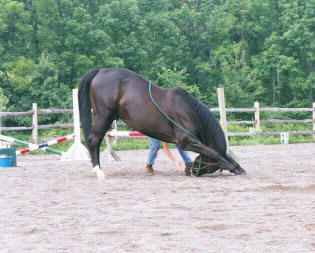
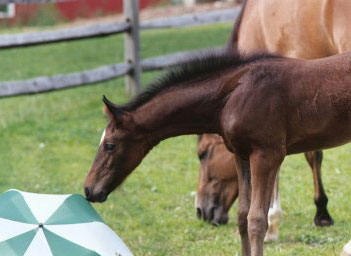
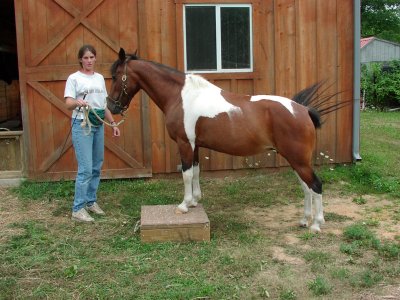
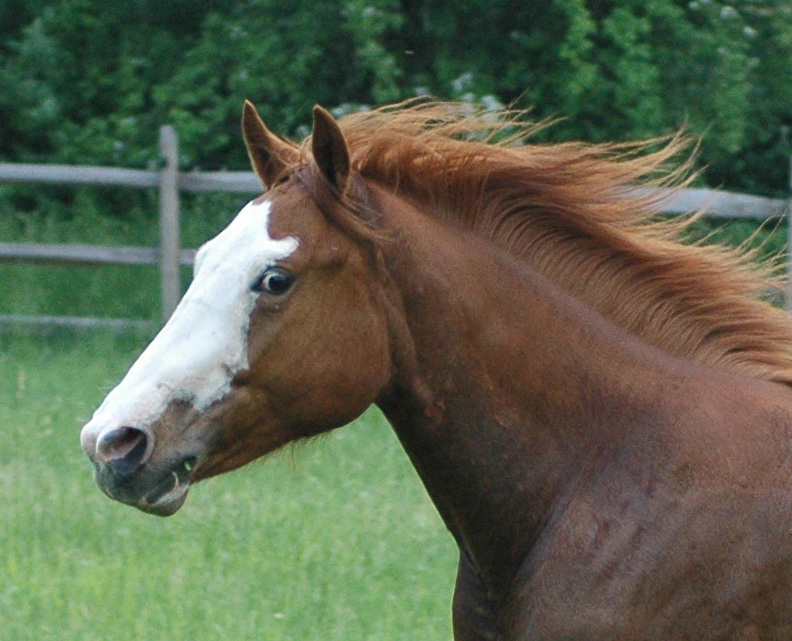
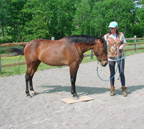
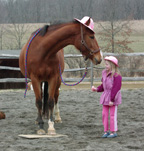
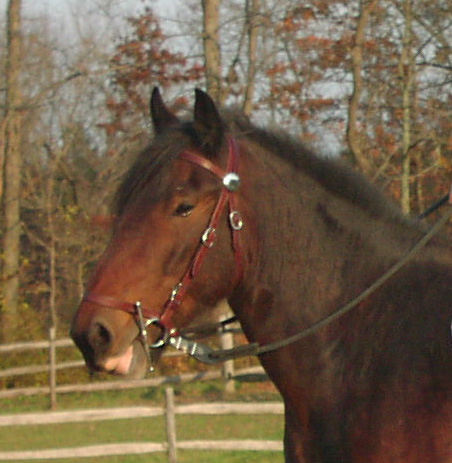
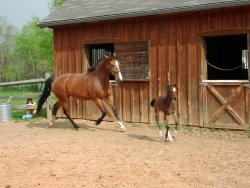 |
|
Clicker Expo 2007: Cleveland, Ohio
On March 23, 24, and 25 I attended ClickerExpo 2007 in Cleveland, Ohio. ClickerExpo is a unique experience because it is a chance for clicker trainers from all over to attend lectures and learning labs, as well as getting to meet and chat with some of the top experts in the field. The focus of ClickerExpo is education. It is not about promoting any specific products or trainers, but about teaching people of all levels how to improve their clicker training skills. I met people who were just starting out as well as people who had been clicker training for 10 or 20 years. Just spending 3 days with the breadth and depth of knowledge there is an amazing experience. Add to that the power of 400 positively thinking people and it can really change your life and inspire you to do more.
ClickerExpo is organized by Karen Pryor Clicker Training. Karen Pryor was one of the pioneers in bringing clicker training to the public as a training method that anyone could use to train their animals. It is based on operant conditioning which was studied by B.F. Skinner in the 1930’s. Operant conditioning is a training method that takes advantage of the fact that behavior that is reinforced is more likely to be repeated and animals can learn to operate on their environment to increase the likelihood of reinforcement. In practical terms, what this means is that if I want an animal to do more of a certain behavior, I need to identify the behavior (clicker training uses a clicker or similar event marker), and then reward the animal with something it wants (often food) so that the animal will repeat the behavior.
In some ways this is very simple, but clicker training is both an art and a science. In order to clicker train well, you have to know the science of how animals learn and how you can manipulate what happens before and after behavior in order to change behavior patterns. You also have to be creative and flexible and willing to experiment because most of clicker training is based on what is referred to as “shaping.” If clicker trainers were limited to just marking and rewarding complete behaviors, it would be pretty limited. But what clicker trainers learn to do is to recognize the baby steps that lead to a final behavior and reward those. In this way I can build a behavior by marking a very tiny change in the right direction and emphasizing that detail (by clicking and treating it) to shape it into the final desired behavior.
Clicker training found its way from B.F. Skinner’s lab to the work of Keller Breland, Marian Breland Bailey and Bob Bailey and then to the marine mammal world where it was used to train dolphins for shows and other work. Karen Pryor started as a dolphin trainer and then she teamed up with Gary Wilkes to take clicker training into the dog world. From there it has spread to the zoo community and finally to horses. I learned about Clicker Training from Alexandra Kurland’s book Clicker Training for Horses which I read in 2000. Since then I have been studying with Alex and reading anything I can get my hands on, whether it is about clicker training horses, dogs, or zoo animals. This is one reason I wanted to attend ClickerExpo. The faculty are some of the top trainers in this country (and others) and are dynamic and passionate speakers. In addition, they are approachable and willing to answer questions. If you can’t get to talk to them, striking up a casual conversation with the person sitting next to you can prove to be both interesting and informative as there are so many other people there with extensive knowledge.
I am lucky that my friend Denise (a dog trainer) was attending ClickerExpo too and we drove out together on Thursday. It was about a 6 hour drive and turned out to be a great warm up for 3 days of clicker training as we talked about things we had been training, new projects and questions we had. When we arrived in Cleveland, we checked in and went to find some dinner. The first thing I noticed about the hotel is that it was full of dogs. I read later that there were 400 attendees and 250 dogs there. I could not quite get used to seeing dogs walking with people, dogs lying down next to sofas, dogs in the bathrooms and dogs walking around the hotel grounds. Not only that, but these were 250 polite dogs. There was very little barking and they moved around the hotel, passing each other and sitting next to each other in lectures without any problems. Many of the dog trainers carry a blanket or mat with them and when we sit down for the lectures, the dog owners will put down the blanket or mat and the dog sleeps or lies down quietly for the duration of the lecture. In one session, the speaker left the podium and walked out the door noisily to make a point, and all the dogs woke up and barked. Until that point, I had almost forgotten that the room was filled with dogs.
ClickerExpo has 3 sessions each day, with a choice of 5 different lectures or learning labs. The lectures and labs are an hour and a half long and while the lectures are not interactive, the learning labs are opportunities to bring your dog and do some hands on training. Half of the learning lab attendees bring dogs and the other half observe. Since I am predominantly a horse trainer, I attended the labs as an observer which I enjoyed and found educational as watching other people train can sometimes be more enlightening than trying it yourself in a new situation.
Friday morning started with a welcome and Karen Pryor introduced the faculty. The faculty is extensive and varied. It included many dog trainers working with all kinds of dogs and in all kinds of training including service dogs, obedience dogs, police dogs, freestyle, agility, and show dogs as well as trainers working with zoo animals, horses, birds, and small animals. The faculty also included the founders of TagTeach which uses a marker signal to improve performance in athletes, musicians, and people working in other areas where reinforcement of tiny details of physical movement can be used to change behavior patterns. They also use a marker signal to identify a specific muscle movement or action that should be repeated. Many of the lecturers are leading professionals in their fields and in great demand as both teachers and trainers.
My first learning lab was on leash/rein/lead handling with Alexandra Kurland so it was familiar ground to me as I have worked with Alexandra extensively for the past 7 years. I enjoyed helping people do the exercises and seeing people discover for the first time how tension in your body affects the animal that you are connected to. From there I went to lunch with Alex, Kathy Sdao and Emma Parsons. I was thrilled to be able to sit down and have lunch with faculty members and hear about what they had been doing. Lunch every day was always interesting. On the second day, I had lunch with a dog trainer and a woman who is starting a program to clicker train 35 cheetahs.
After lunch I went to a session on using research to be a better trainer. The focus of the session was on how we evaluate when an animal really knows something. How often do we think the horse ‘knows” something and should now do it? Then when the horse does not, we think the horse is stupid or not paying attention. It was quite thought provoking as was the discussion on how to keep training rules consistent so that the animal does not get confused. In clicker training, there is quite a bit of debate over whether every click should be followed by a treat. Jesus Rosales-Ruiz had some video footage showing how animals can get confused when training is not consistent. In his study, not treating after every click led to the dogs disengaging from the handler and losing interest in the training.
I ended the day with a session on building fluency in behaviors. Fluency is when the animal responds correctly to the cue regardless of the location, distractions, distance from handler and any other changes in the environment. This is important if you school your horse mostly at home but want to be able to get the same performance at a clinic or horse show. There are lots of great strategies for helping animals perform consistently under new situations and she shared them with us. It gave me new insight into how to help young horses cope on their first trips away from home and what it was realistic to expect of them.
Day 2 was more lectures. I attended one on teaching clicker training which I found interesting because clicker training is more widely accepted in the dog world than it is with some other animals. I found it helpful to see what the dog trainers had been going through in their work on switching people over from traditional dog handling and how they helped new trainers to learn the skills in timing and observation that are necessary to clicker train successfully. Kathy Sdao presented a list of common “speed bumps” that people encounter when learning clicker training. Both in this lecture and throughout the whole Expo, there was a lot of emphasis placed on good trainer mechanics. It is so important that the animal learn to pay attention to the clicker and not get fixated on the food. It matters how you deliver the food and how you structure your training sessions and that you make sure the animal is having a high rate of success.
I got to see this in person when I attended a learning lab later that day. The lab was on targeting which is teaching an animal to touch a body part (often the nose) to a target. It is useful for teaching animals to follow you, stay in a certain location or move a body part in a desired way. It is very useful for horses as we can use it to teach a horse to stand for husbandry procedures (vet, farrier, dentist, clipping etc..) by having the horse target with his nose or feet. In this way, the horse learns to stand quietly and there is no need to use force or equipment to restrain the horse.
I was paired up with a woman with an older German Shepherd. The dog has some weakness in her hind end and the woman brought her to the targeting class as she knew the dog enjoyed clicker work and she thought the dog would be able to do it. I loved her attitude. She just wanted the dog to be included and was willing to choose an activity that was at the dog’s level. One exercise involved teaching the dogs to touch a target for longer duration. Another exercise was working on teaching the dog to follow eye contact. It was wonderful to see this old girl brighten up and try to figure out what she needed to do to earn a click. The learning labs were fun experiences. We were packed into a small room, 40 people and 20 dogs all trying to learn a new skill. There were no harsh words, no frustrated people, just trainers quietly working with their dogs. I found myself thinking about new clicker trainers who worry that their horse will be distracted by another horse being clicked if multiple trainers are working in the same area, but this is not an issue. Every dog in that room was focused on its trainer and they all knew when a click was meant for them.
Some other highlights of the lectures and learning labs I attended on day 3 were learning how to teach modifier cues (left/right, up/down etc…), seeing how police dog training, which can be very punishment based, could also be taught with positive reinforcement, and learning about advanced training tools that one could use in conjunction with clicker training. Ken Ramirez taught the session on advanced training tools. He is an articulate speaker and great story teller. He emphasized that the most important tool any of us have is to reinforce what we want and ignore what we don’t want. He did make the point that when we ignore what we don’t want, we have to take safety into account. In his program at the Aquarium where he has many trainers working under him, he does not pair novice trainers with animals that have serious behavioral issues. This really resonated with me, because so many of the people I meet are brought into clicker training because they have an animal that did not respond well to other methods. So they are dealing with serious behavioral issues while they are learning to clicker train at the same time. It is not an ideal situation, but he gave us some advice on how to help work through this.
I also enjoyed the panel discussion where 8 of the faculty members answered previously submitted questions. I enjoyed this part because it showed how different trainers approach problems differently, based on their past experience, species they work with and training goals. At the same time, it also showed how the basic principles of clicker training were the same and how you can train a monkey in the same way you train a dog. I also liked hearing how creative trainers are in their approaches. It is all about keeping the animal successful and enjoying the training.
This was a great learning experience for me. I can see the power of clicker training in my work with my own horses, but it was really inspiring to feel and see the passion and dedication of so many other trainers working with a variety of animals and in all kinds of different situations. As a final word, I think one of the most important parts of the expo for me was when the faculty members listed the qualities they look for in a good trainer. They were patience, empathy, being generous with reinforcers, imagination, identifying the learner’s needs, as well as being observant, compassionate, and fascinated by animal behavior.
Katie Bartlett, 2007 - please do not copy or distribute without my permission
Home | Articles | Clicker Basics | Community | FAQ | Getting Started | Horse Stories | Links | Photos | Resources
|
||||